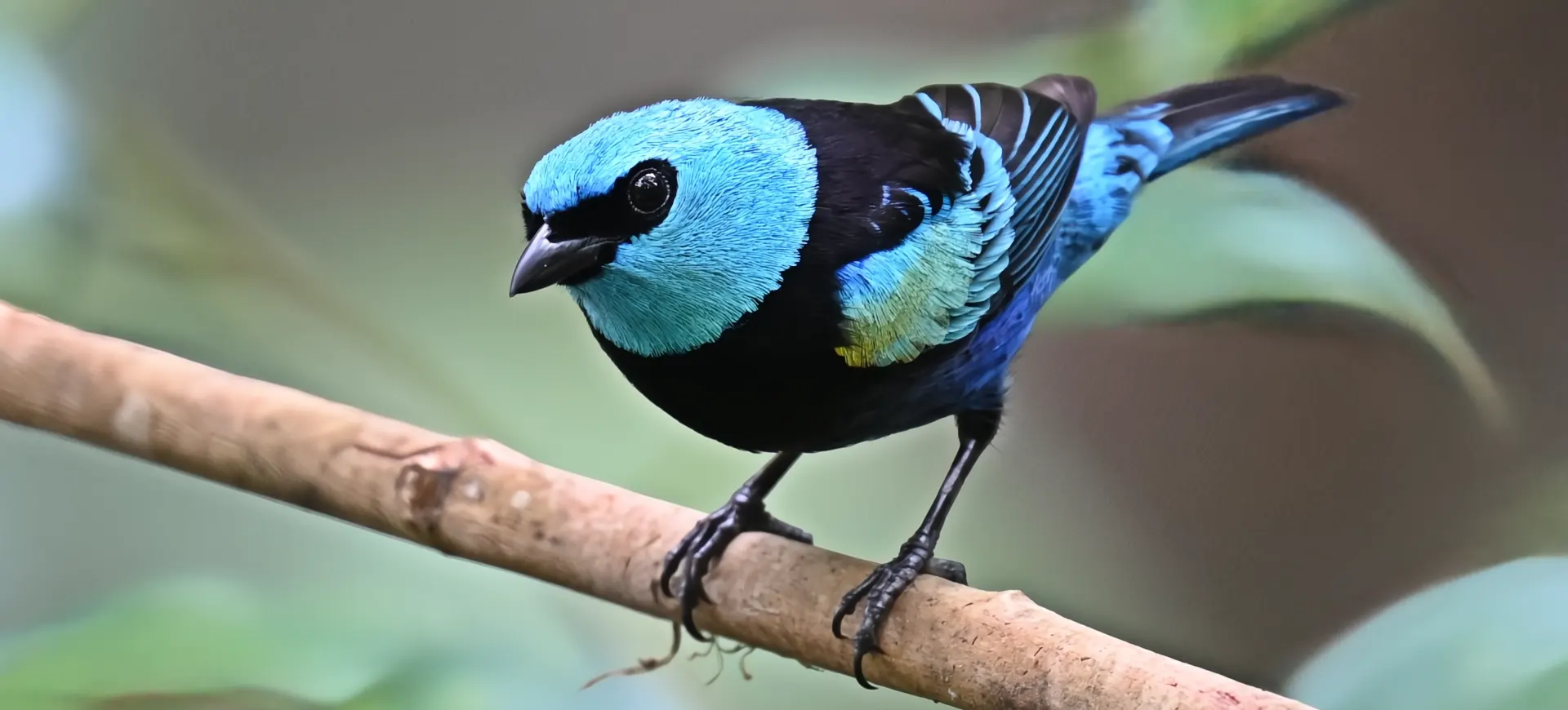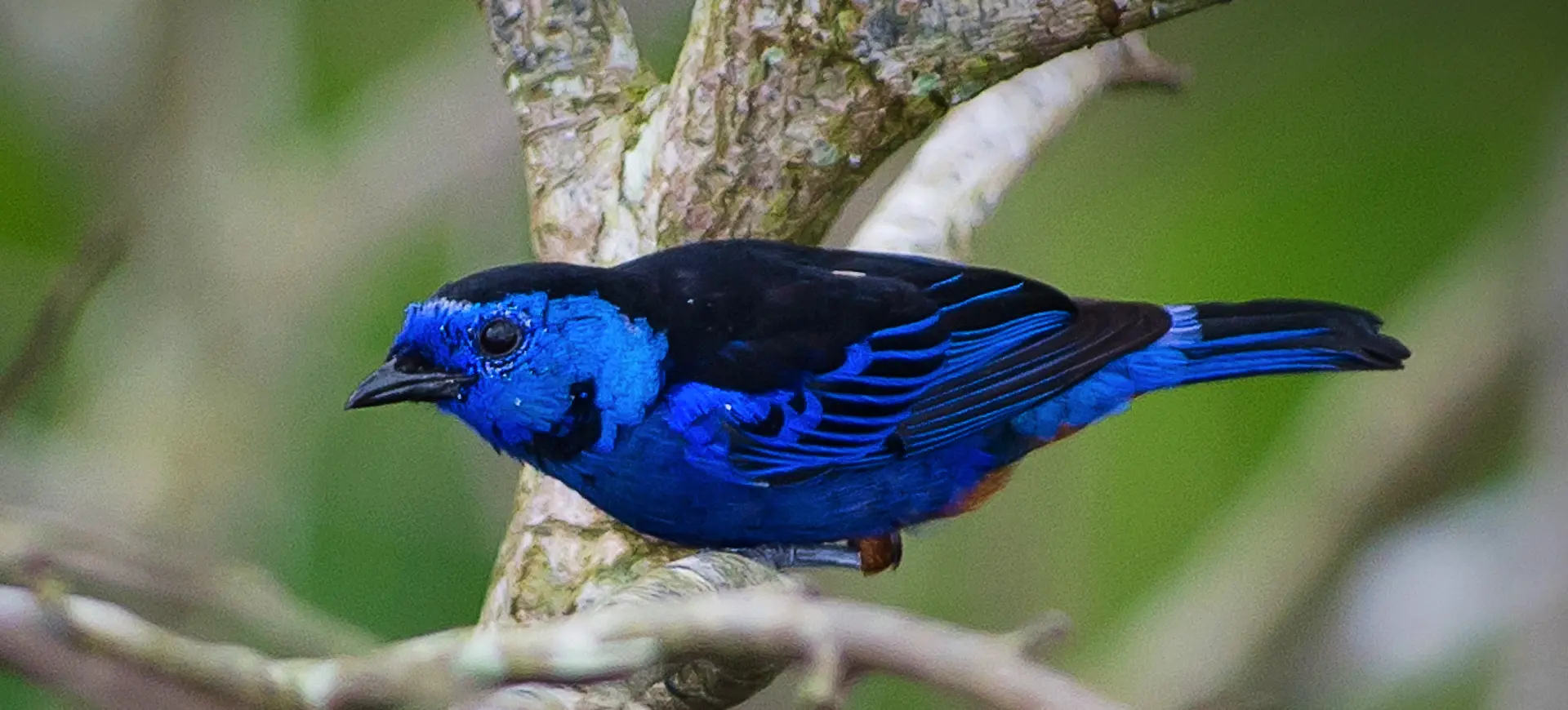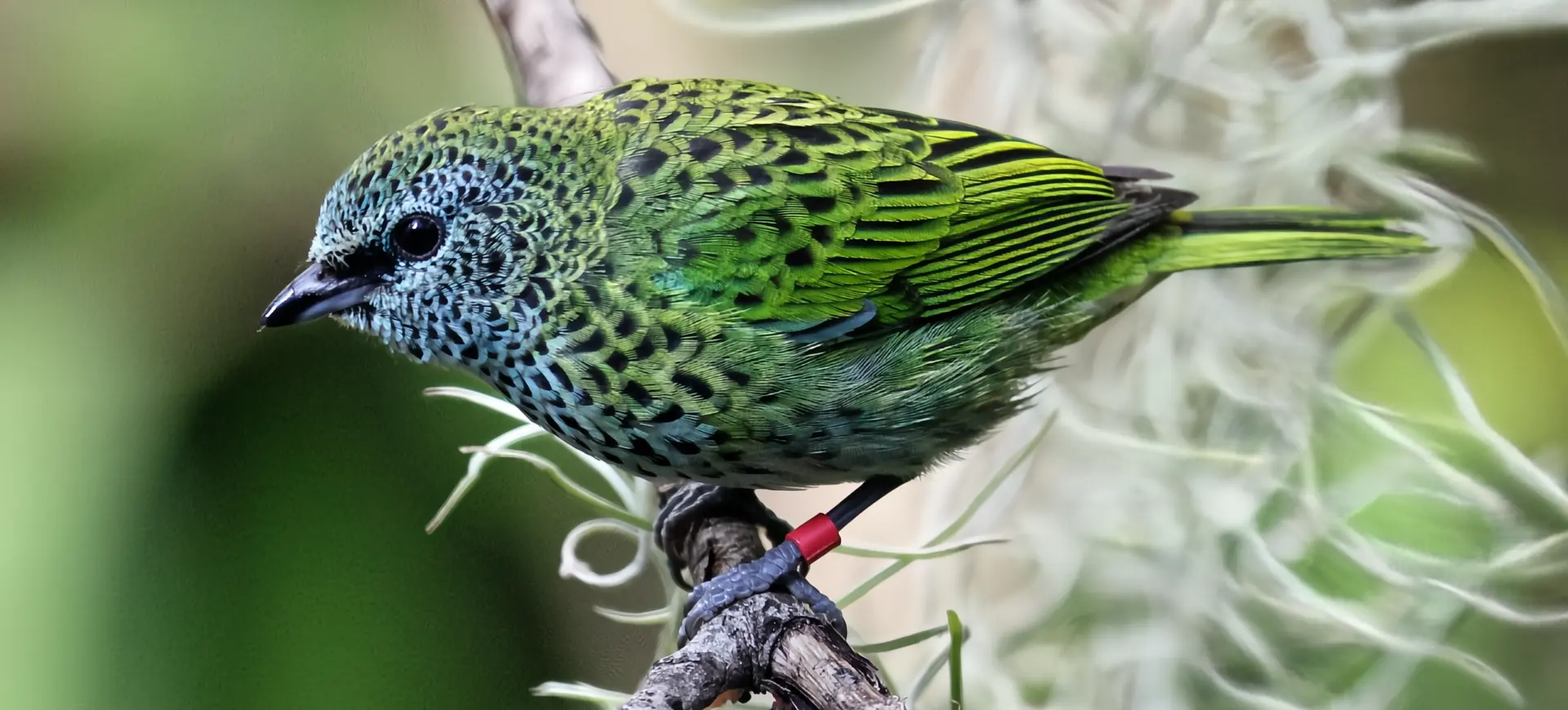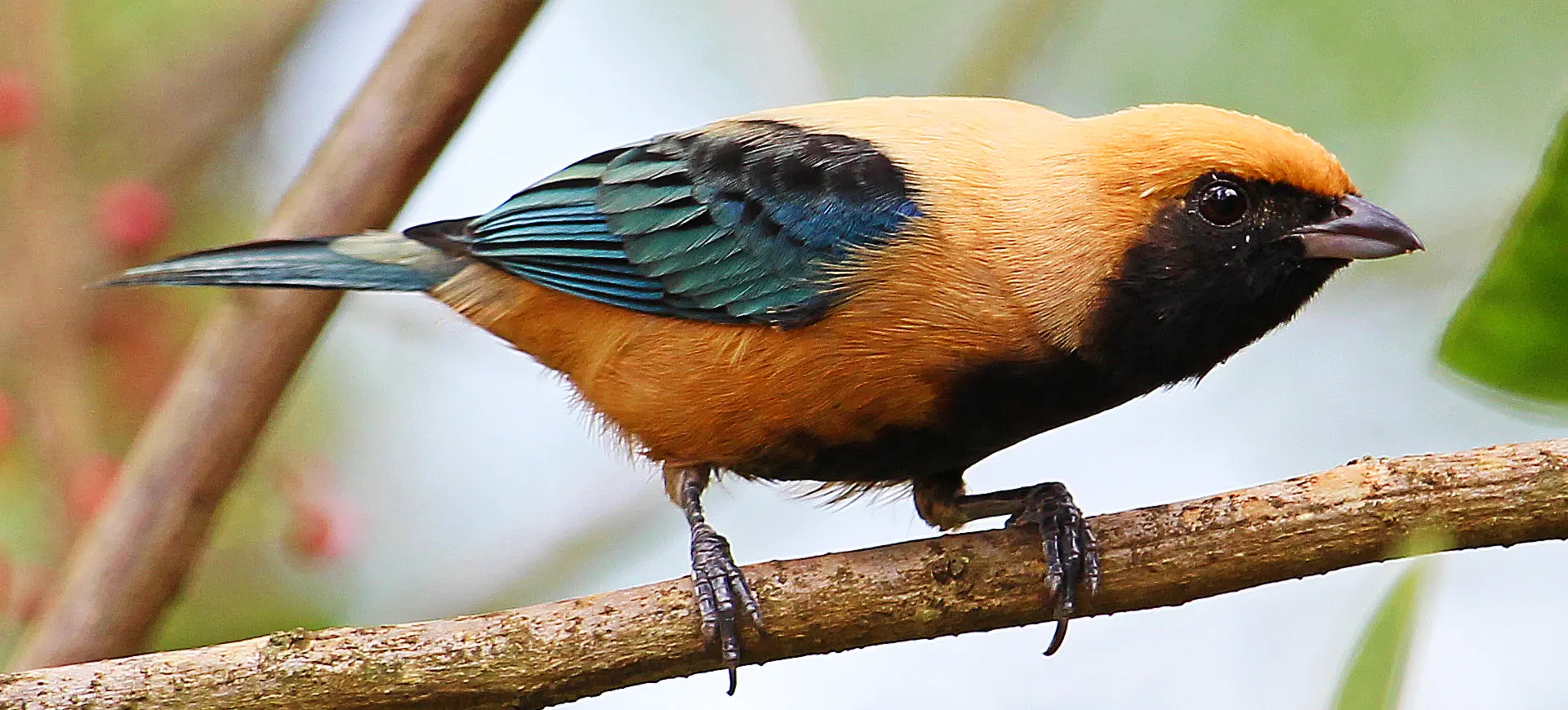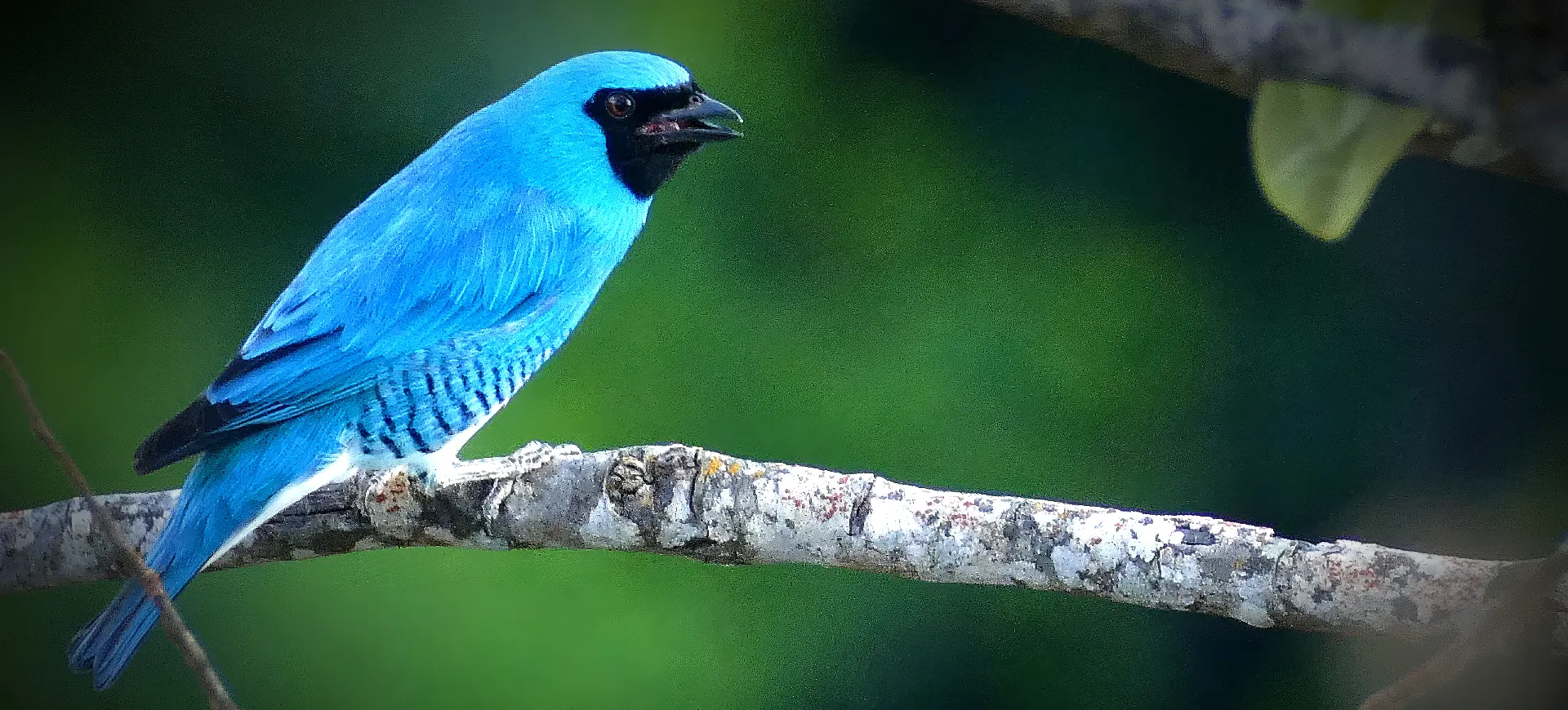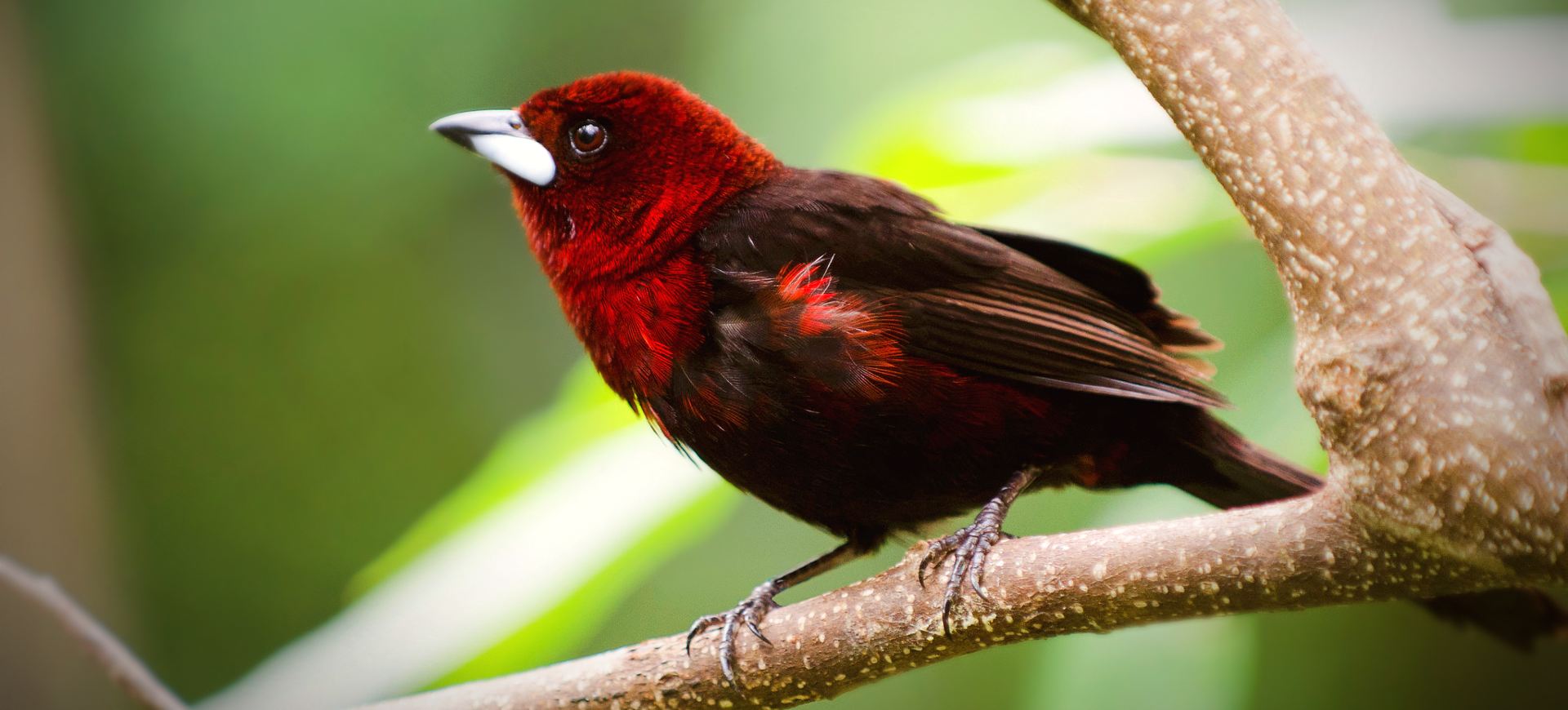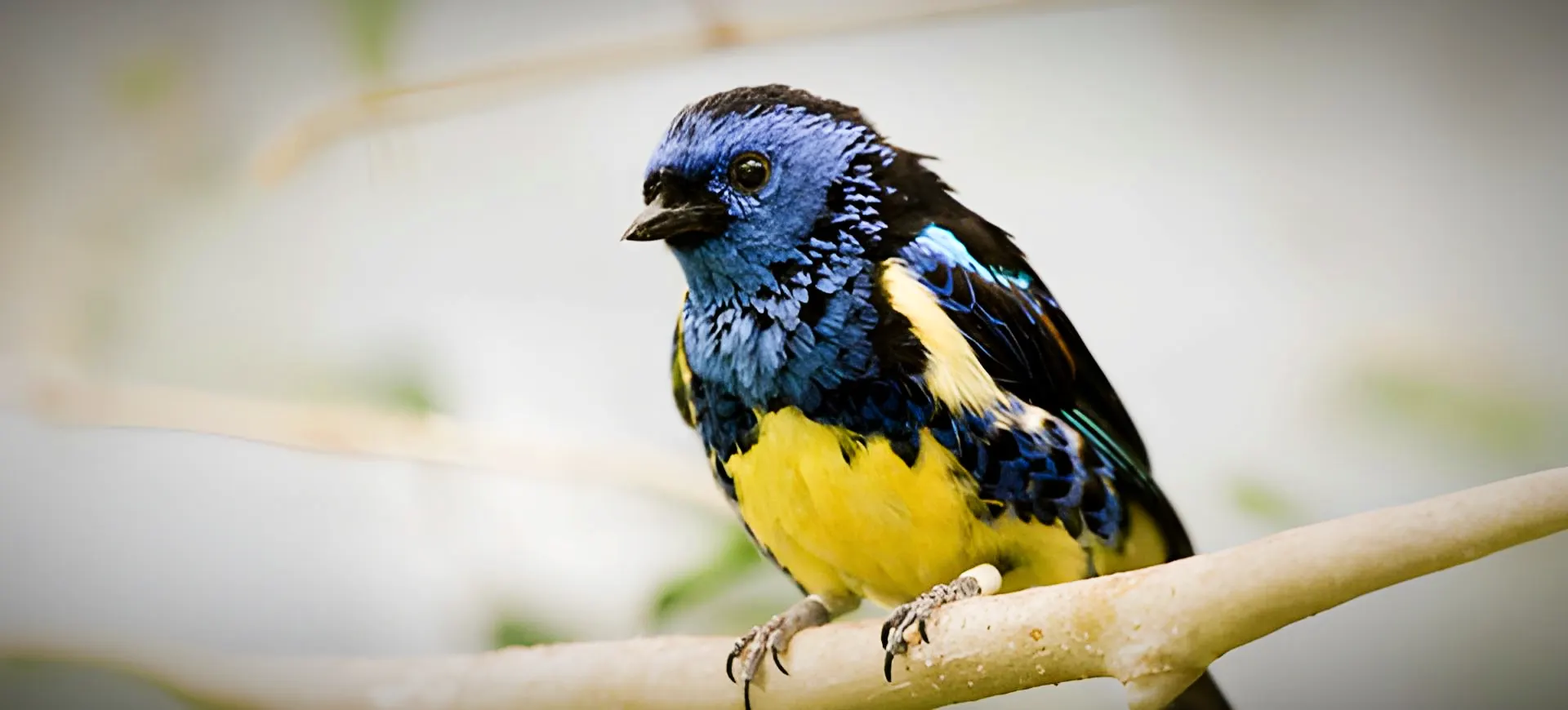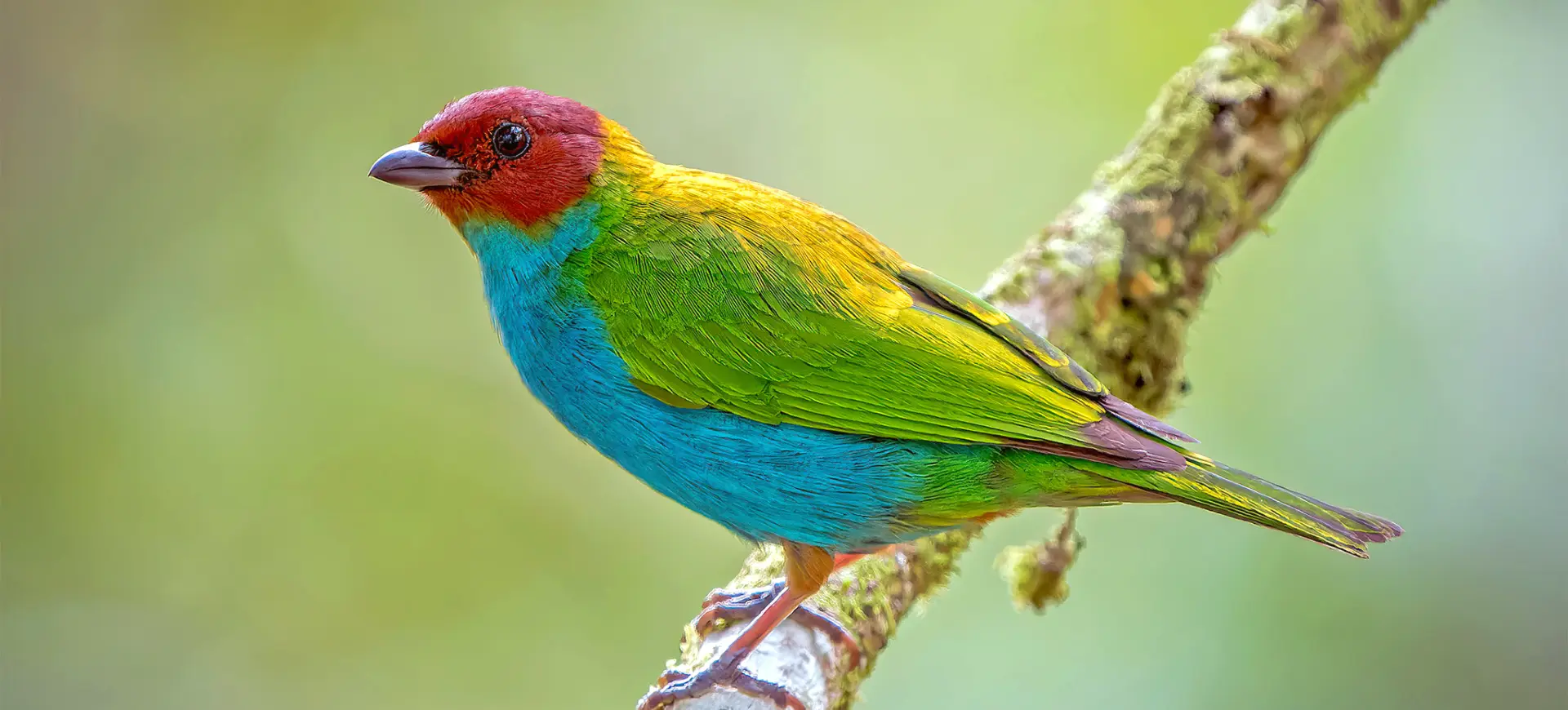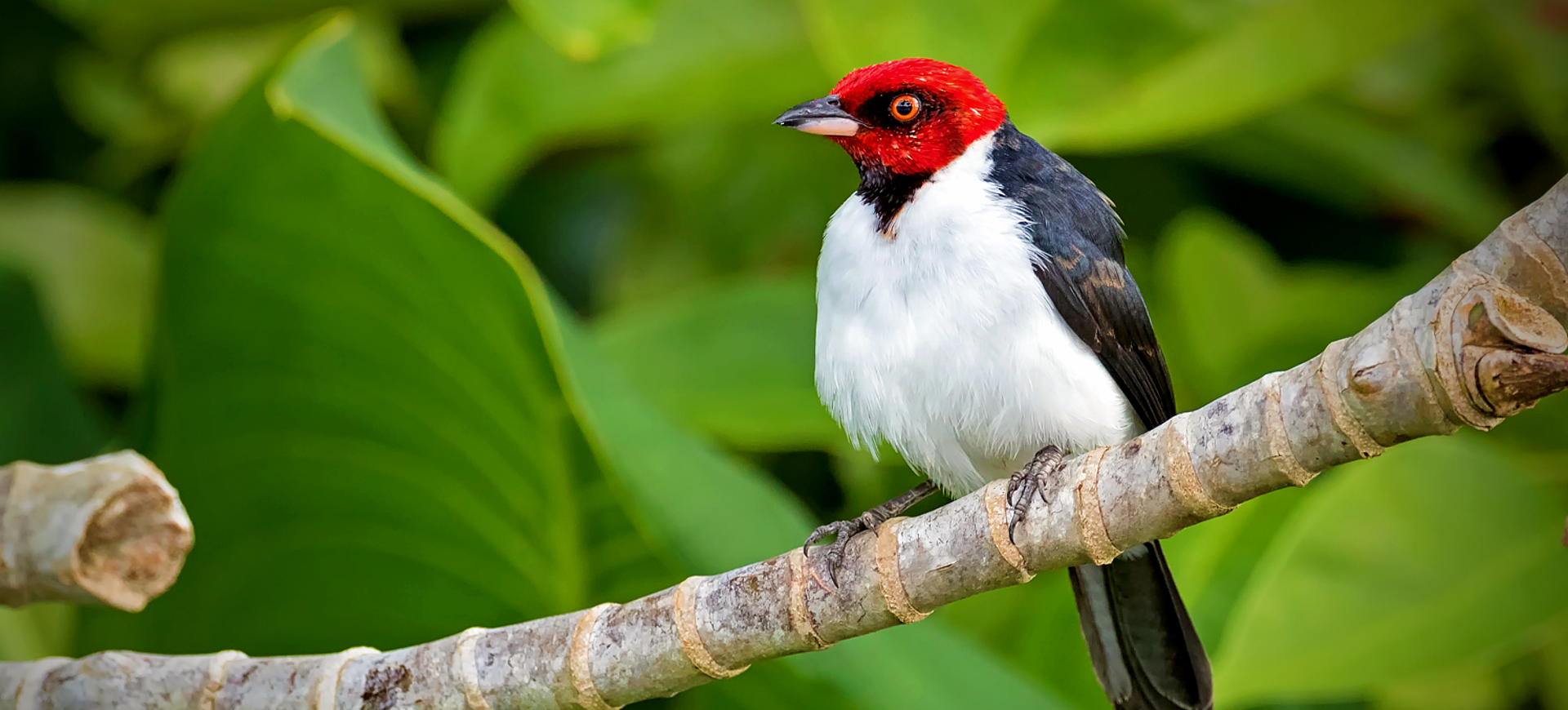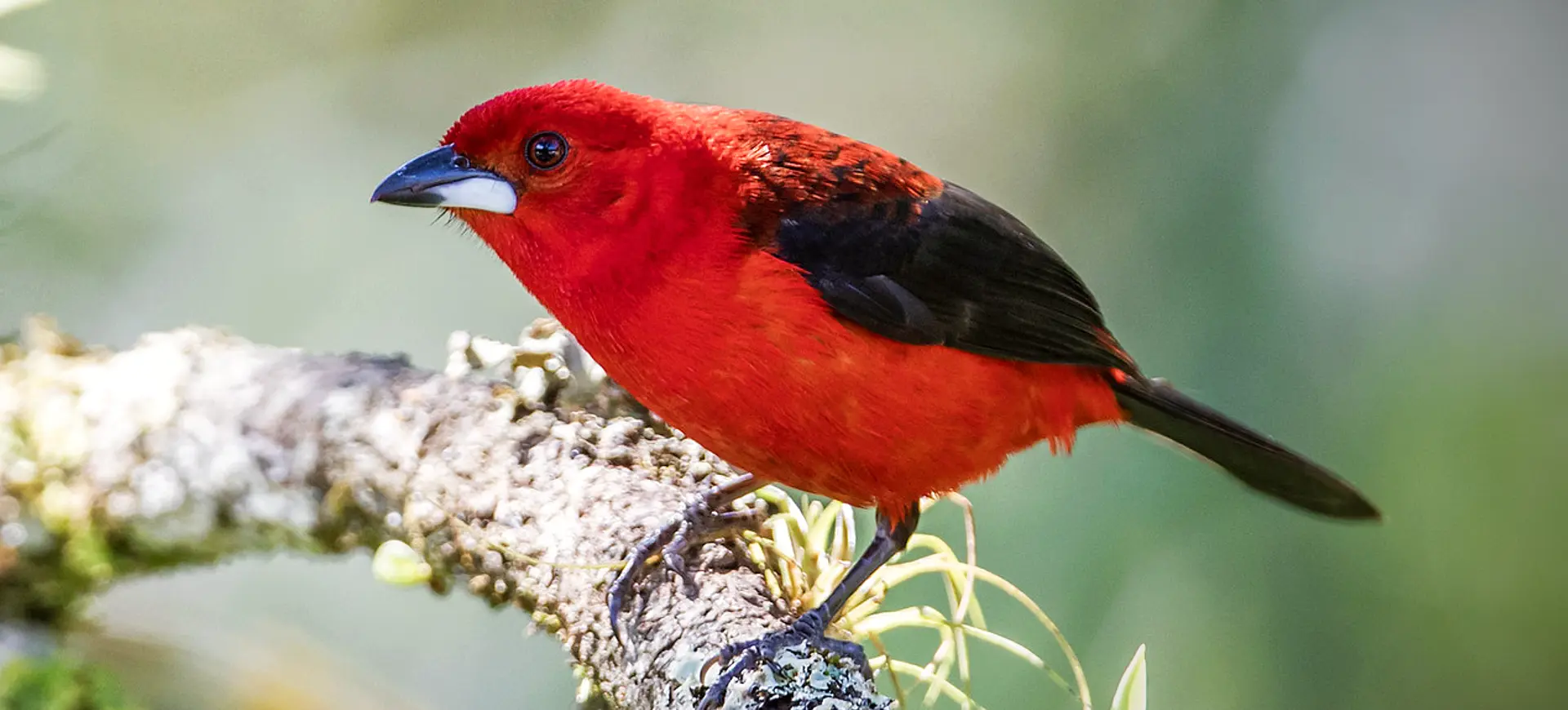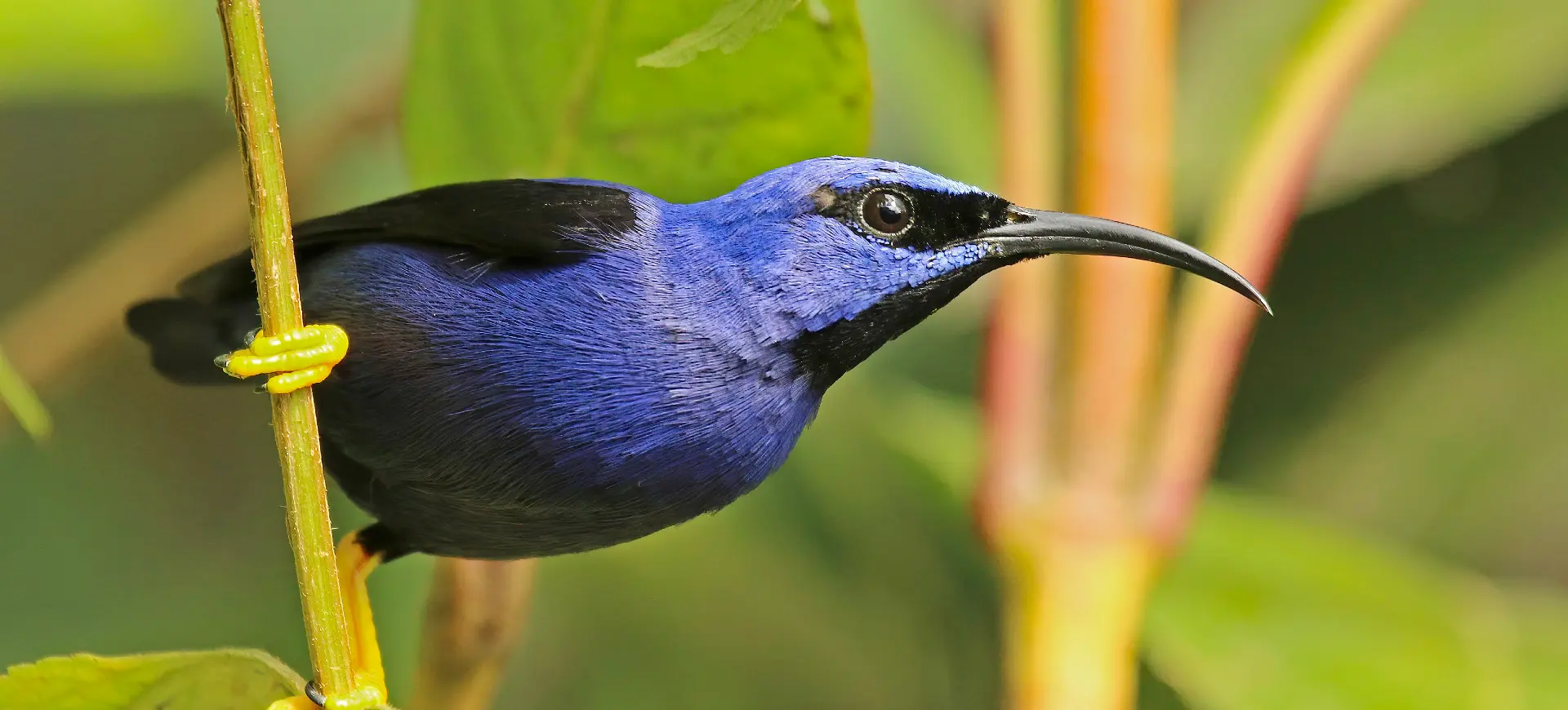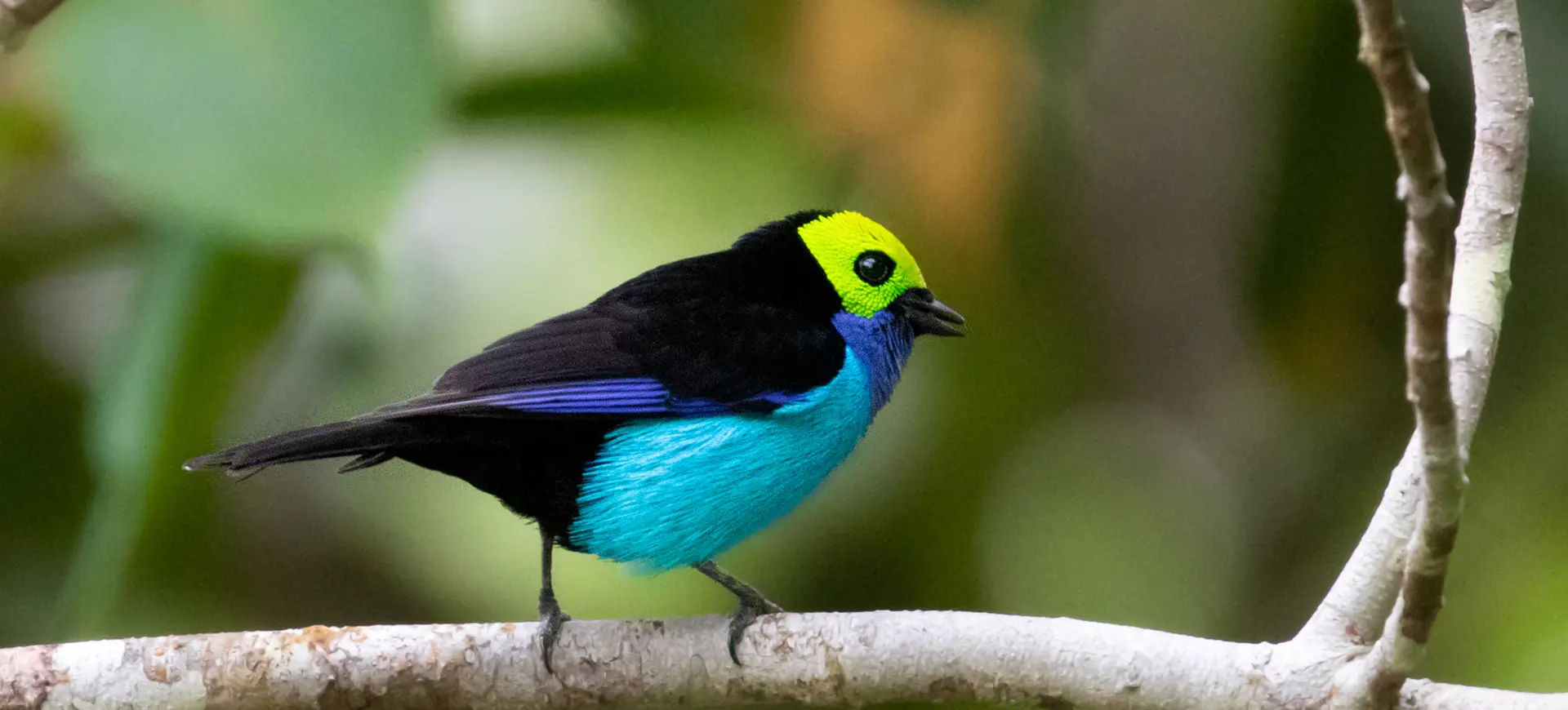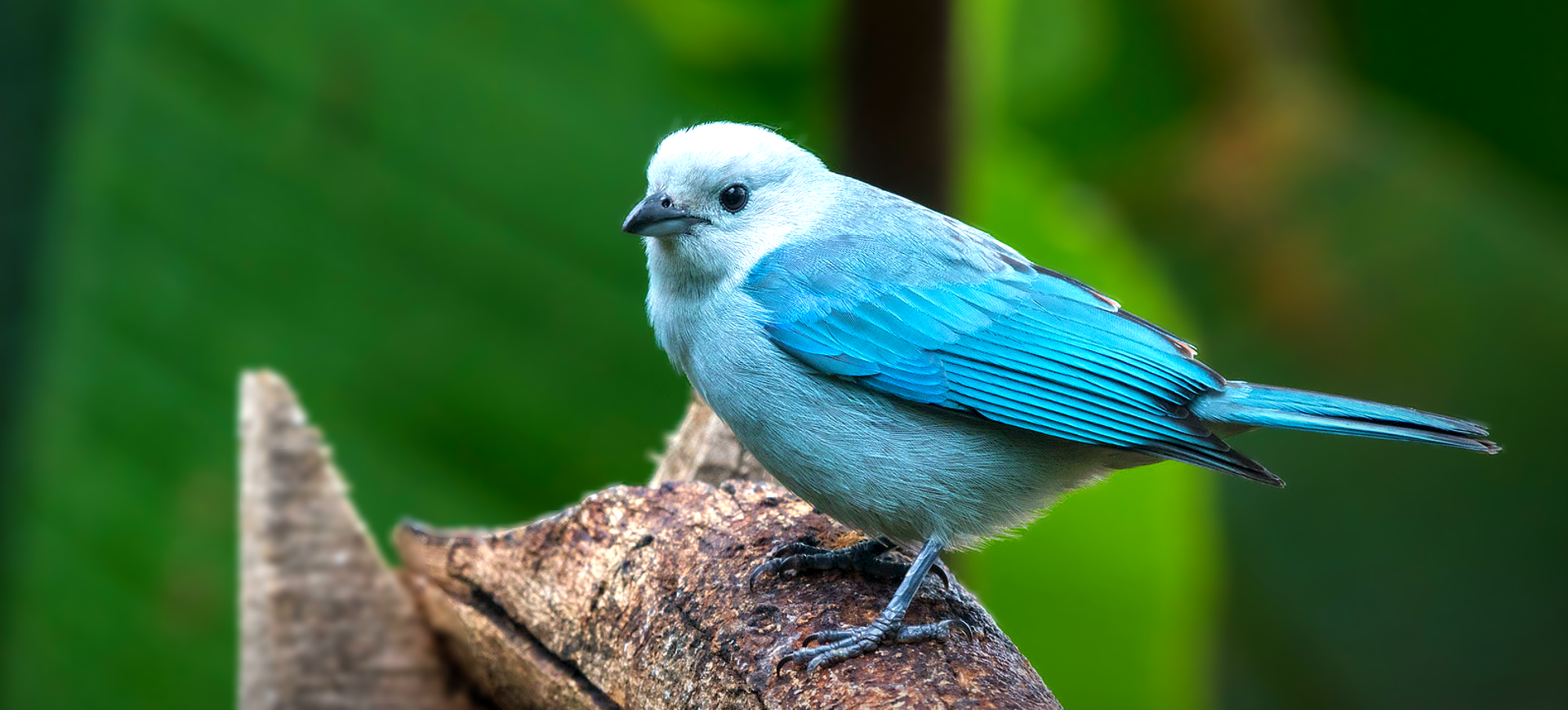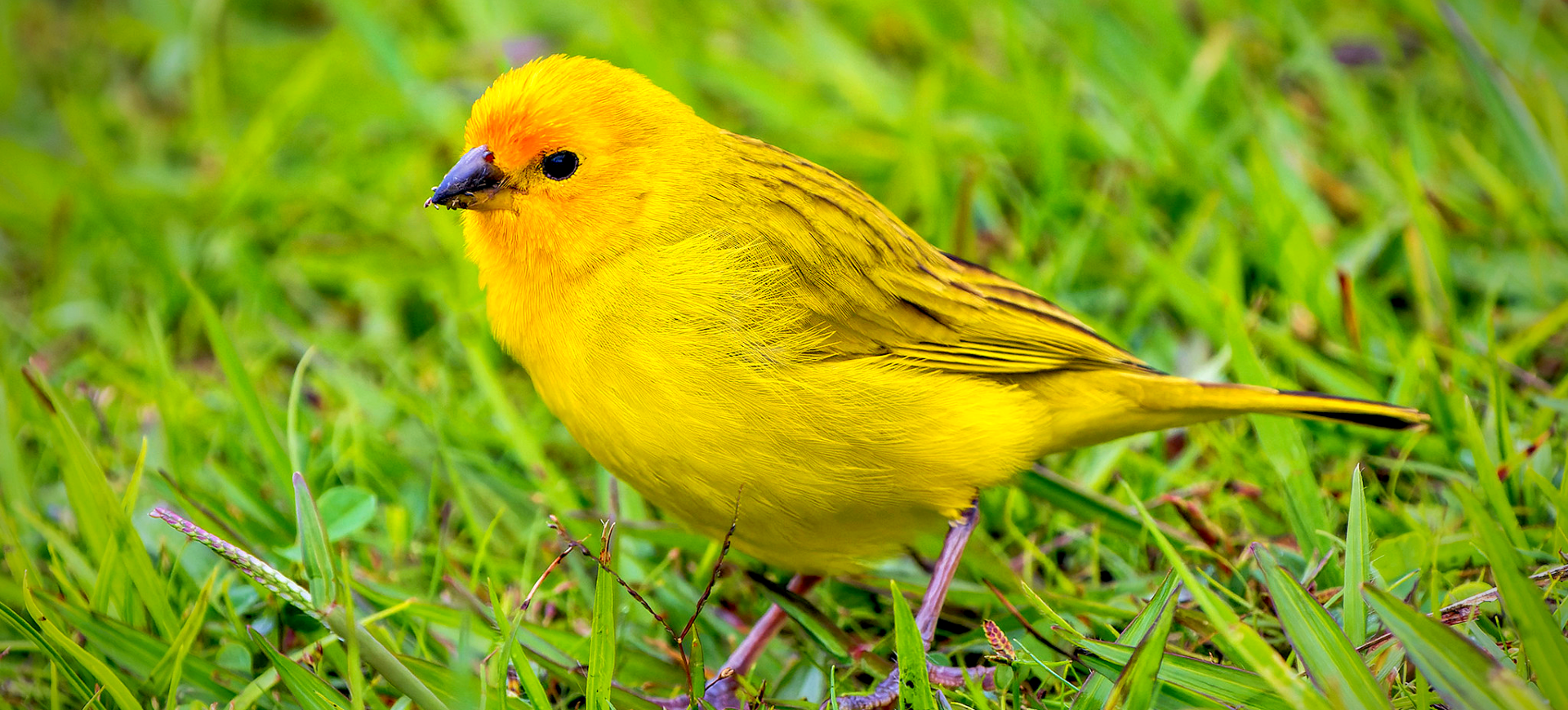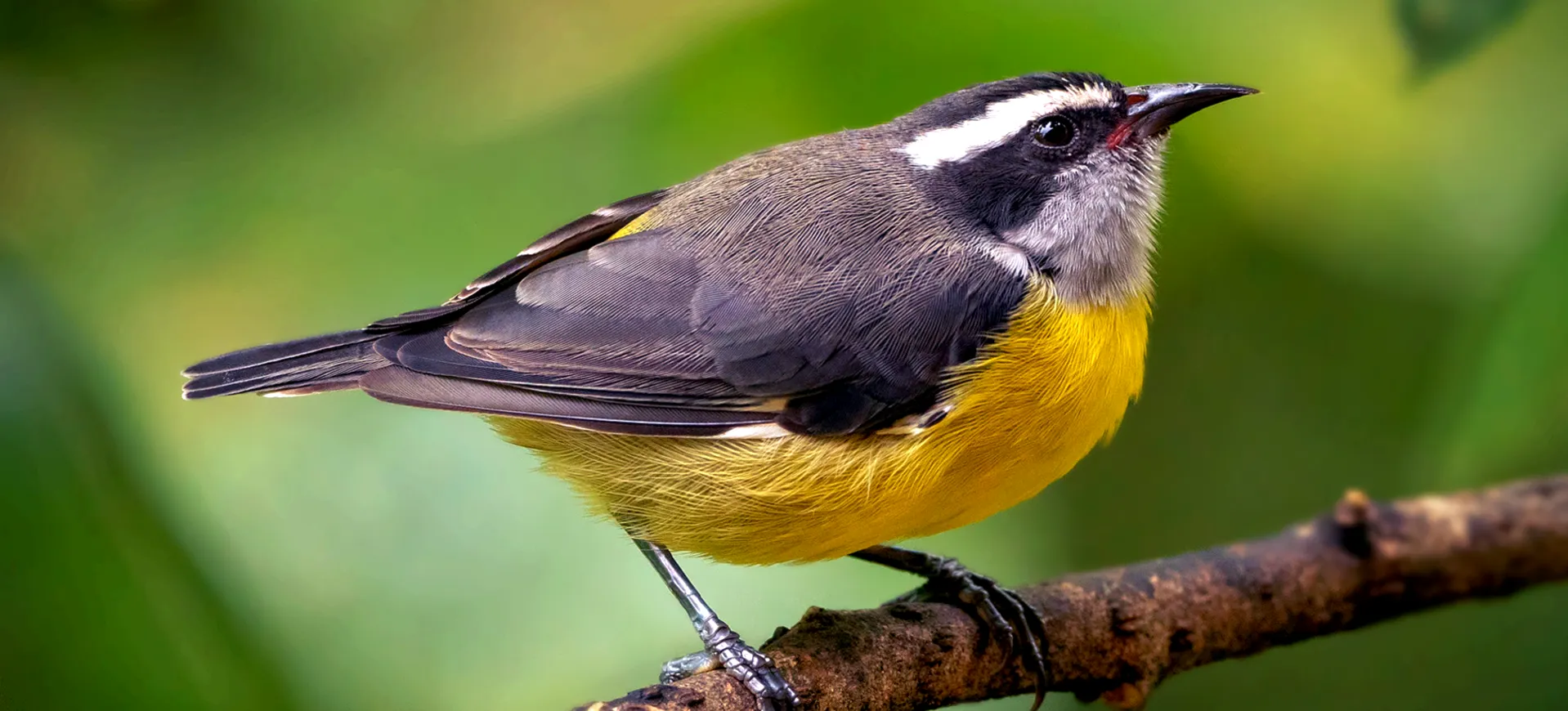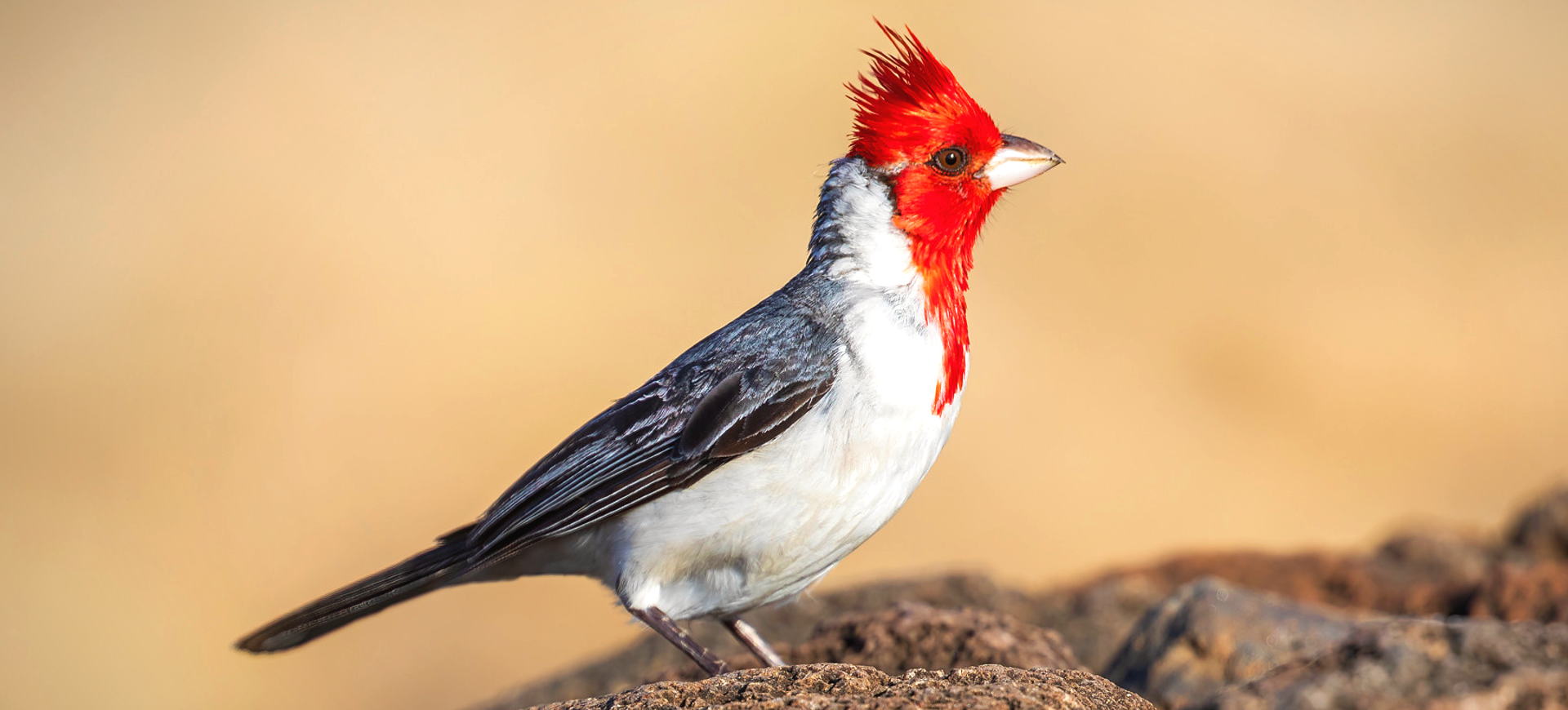Overview
The Green Honeycreeper, scientifically known as Chlorophanes spiza, is a small, vibrant bird found in the tropical forests of Central and South America. Males are particularly striking with their bright green plumage and black hood, while females and juveniles are more subdued, primarily green with a slightly paler underside. Both sexes have a distinctive, curved beak perfectly adapted for their nectar-feeding habits. These birds are often seen in pairs or small groups, moving through the canopy for food.
Inhabiting humid lowland forests, Green Honeycreepers are commonly found in areas with abundant flowering and fruiting trees. They are adaptable birds, able to thrive in secondary forests and plantations and in pristine forest environments. Their preference for the upper levels of the forest canopy makes them more often heard than seen, their sharp, high-pitched calls resonating through the forest. The Green Honeycreeper plays an essential role in its ecosystem, pollinating flowers and dispersing seeds.
As omnivores, Green Honeycreepers have a varied diet that includes nectar, fruits, and small insects. Their curved beaks and brush-tipped tongues are ideally suited for extracting nectar from flowers. When feeding on fruits, they contribute to seed dispersal, aiding in the regeneration of their forest habitats. Insect consumption adds necessary protein to their diet, which is particularly important for females during breeding.
Taxonomy
Kingdom
Phylum
Class
Order
Family
Genus
Species
Sub Species
Type

Lifespan: Wild: ~10 years || Captivity: ~15 years

Weight: Male & Female: 0.49-0.81 oz (14-23 g)

Length: Male & Female: 5.1–5.5 in (13-14 cm)

Wingspan: Male & Female: 5.6–5.6 in (14-16 cm)

Top Speed: Unknown
Characteristic:
Native Habitat:
The Green Honeycreeper is native to the tropical forests of Central and South America. Their range extends from southern Mexico through Central America to northern South America, including countries such as Colombia, Venezuela, and Brazil. They are typically found in humid lowland forests in primary and secondary-growth areas. These habitats provide the dense canopy cover and abundance of flowering and fruiting trees necessary for survival.
Their preference for the canopy and middle levels of the forest allows them to exploit a wide range of food sources. Green Honeycreepers are also found in wooded habitats like plantations and gardens, demonstrating their adaptability to modified environments. The preservation of their forest habitats, particularly the diverse understory and canopy layers, is crucial for maintaining healthy populations of this species.
Climate Zones:
Biomes:
WWF Biomes:
Biogeographical Realms:
Continents:
Diet:
Diet & Feeding Habits:
Green Honeycreepers are omnivorous, with a diet primarily consisting of nectar, fruits, and small insects. Their specialized beak and tongue are perfectly adapted for extracting nectar from various flowers. This nectar-feeding habit makes them important pollinators within their ecosystem. When consuming fruits, they play a crucial role in seed dispersal, contributing to forest regeneration.
In addition to nectar and fruit, these birds consume small insects and arthropods, providing them with essential proteins. Their foraging behavior often involves quick movements and agility as they search for food among the foliage and flowers. They are known to be opportunistic feeders, adapting their diet to the seasonal availability of different food sources. The adaptability of their feeding habits is key to their survival in the diverse tropical forests they inhabit.
Mating Behavior:
Mating Description:
Green Honeycreepers are monogamous, with pairs forming strong bonds during the breeding season. Their courtship behavior often includes vocalizations and the male displaying his bright plumage to attract the female. Nest building is typically undertaken by the female, who constructs a small cup-shaped nest in the canopy or understory. Both parents share responsibilities in incubating the eggs and feeding the chicks.
The female usually lays 2 to 3 eggs, which are incubated for about 12 to 14 days. The chicks are altricial, meaning they are born relatively underdeveloped and require significant parental care. After hatching, both parents feed the chicks with insects and regurgitated fruit. The breeding season timing can vary depending on the geographic location within their range.
Reproduction Season:
Birth Type:
Pregnancy Duration:
Female Name:
Male Name:
Baby Name:
Social Structure Description:
Green Honeycreepers are typically found in pairs or small family groups, particularly during the breeding season. They exhibit cooperative behavior in raising their young, with both parents actively nesting and feeding the chicks. Outside the breeding season, they may join mixed-species feeding flocks, a common behavior in tropical forest birds.
These mixed-species flocks provide increased foraging efficiency and safety from predators. The social interactions within these flocks are characterized by vocal communication and cooperative foraging behavior. Green Honeycreepers demonstrate flexibility in their social structure, adapting to the varying conditions of their forest habitats. This social adaptability is a key factor in their ability to thrive in the diverse ecosystems of the tropical Americas.
Groups:
Conservation Status:
Population Trend:
The population of the Green Honeycreeper is considered stable and widespread within its natural range. They are a common species within suitable habitats, indicating a healthy population status. Their adaptability to various forested and semi-forested habitats, including those altered by human activity, contributes to their resilience.
Their populations may be at risk in regions where deforestation and habitat destruction are prevalent. Conservation efforts focusing on preserving and restoring tropical forest habitats are key to maintaining healthy populations of Green Honeycreepers. Their status as a visually striking and ecologically important species makes them a priority for conservation initiatives in tropical America.
Population Threats:
The primary threats to the Green Honeycreeper include habitat loss due to deforestation and land conversion for agriculture and other human activities. The destruction of tropical forests reduces the availability of suitable nesting sites and food resources, directly impacting their survival. Climate change poses an additional threat, as it can alter the delicate balance of the tropical forest ecosystems on which these birds depend.
Despite these challenges, their wide distribution and generalist feeding habits have enabled them to maintain stable populations. Ongoing conservation efforts focusing on habitat preservation and sustainable land use are essential for their continued well-being.
Conservation Efforts:
Green Honeycreeper’s conservation efforts focus on habitat preservation and protecting tropical forests. This includes establishing and managing protected areas, enforcing anti-deforestation laws, and promoting sustainable land-use practices. Reforestation and habitat restoration projects are also important for replenishing areas that have been degraded.
Educational programs and community involvement are essential in raising awareness about the importance of tropical forests and the species that inhabit them. Research on the Green Honeycreeper’s ecology, behavior, and population dynamics is crucial for developing effective conservation strategies. Given the bird’s distribution across multiple Central and South American countries, international cooperation is key.
Additional Resources:
Fun Facts
- The curved beak of the Green Honeycreeper is perfectly adapted for extracting nectar from flowers, showcasing the bird’s specialized feeding adaptation.
- The male’s vibrant green plumage results from the light-refracting properties of the feather structure, not due to green pigments.
- Despite their preference for nectar, Green Honeycreepers are agile enough to catch small insects in mid-air, displaying their versatility as foragers.
- Birdwatchers often use the high-pitched, melodic calls of the Green Honeycreeper to locate these otherwise elusive birds in the dense forest canopy.
- In some indigenous cultures, the bright plumage of the Green Honeycreeper is seen as a symbol of growth and vitality.
- These birds play a crucial ecological role in their habitats, not only as pollinators but also as seed dispersers, aiding in maintaining forest biodiversity.
- The adaptability of Green Honeycreepers to modified habitats, such as gardens and orchards, highlights their resilience in the face of environmental changes.
- During courtship, the male Green Honeycreeper performs a series of display flights and vocalizations to attract a mate, showcasing his bright plumage and agility.
- Young Green Honeycreepers learn to mimic the calls and songs of their parents, a key aspect of their social development and communication skills.
- The presence of Green Honeycreepers is often an indicator of a healthy, biodiverse tropical forest ecosystem.





